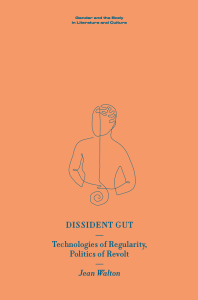The COVID-19 pandemic has shed new light on the paradoxes of our time. Consider the great vulnerabilities of so-called “essential” workers in farms, factories, hospitals, schools, daycares, slaughterhouses, delivery warehouses, as well as in marginalized “hot-spot” neighborhoods of segregated urban areas.
At the same time, vulnerable groups with essential needs of international protection are denied the right to seek asylum in the middle of a global crisis. In fact, “public health” has become the justification for the closure of ports of entry and the expedited expulsions of asylum seekers from the United States under the official policy known as “Title 42.”[2]
In other words, neither those deemed most necessary for societies to function, nor those regarded as the most fragile are afforded any respite in such critical circumstances. Rather, their precarious predicament reveals how “racial capitalism”—understood as the “inextricability of race and capitalism” rather than as a specific period in the history of capitalism—simultaneously exploits, subjugates and excludes racialized subjects.[3]
Yet, the pandemic has also exacerbated the visibility of the nefarious role performed by institutions such as the police, prisons, ICE and borders as a whole in maintaining and reproducing class, racial, colonial and patriarchal inequalities.[4] We are at a critical discursive juncture when our political imaginaries are expanding beyond powerful categories and rationalities that naturalize the nation state, its borders and the proliferation of carceral violence. In this context, migrant trajectories, lived experiences and solidarities offer a unique window into the global carceral continuum and can help to internationalize the politics of abolition in COVID-19 times.
To be sure, the plight of migrants is not exceptional but intimately intertwined with a global racial formation in which the lives of black, brown and Indigenous peoples are systematically violated and dispensed with. As Mae Ngai argues, while we should not conflate the specific experiences of racialization that different groups have gone through, it is important to underscore the connections among different racist legacies.[5]
For one thing, even as legal status continues to be a significant source of privilege and underprivilege, racialized groups seldom take for granted the entitlements promised by national citizenship. In fact, racism simultaneously excludes migrants and native-born people. Thus, beyond the native-migrant binary,[6] an anti-racist coalitional politics of abolition of borders and prisons offers an apt political horizon.
For displaced peoples, even before they are set in motion and especially after they have crossed international borders, racialized patterns of exclusion, coercion, expulsion and confinement render it impossible both to stay and to run away.
The pandemic has aggravated but not created this double bind, which was effectively captured in the wrenching images of nine thousand Hondurans fleeing starvation and violence by foot who were met by Guatemalan troops and police armed with guns, teargas and riot shields in January 2021. Their “clash” took place in Chiquimula, Guatemala, about 35 miles from the border with Honduras, not only amidst the global pandemic, but also after two major hurricanes (category 4 and 5) had devastated large areas throughout the Central American isthmus.[7]
Footage that circulated through social media showed an enormous deployment of military power at the point where the migrant caravan was “cleared.”[8] Experts declared that the images bluntly showed a “war” against the people migrating.[9] Gerardo Chévez, a Honduran journalist from Radio Progreso who witnessed the operation, pointed out that this iteration of the Honduran “exodus” was composed of the most “excluded,” “vulnerable” and “unprotected” segments of society, yet it faced the military siege (el cerco) of the Guatemalan state.[10]
Simultaneously displaced and confined through the militarized expansion of US border enforcement across the hemisphere, these Honduran caravaneers embody an impossible subject position that is by no means singular.
Following Mae Ngai, I define “impossible subjects” as those who confront deeply contradictory structural forces and thus come to inhabit an existential state of impossibility, that is, as “[persons] who cannot be and a problem that cannot be solved.”[11] Just as Mexican workers were at once actively pursued as cheap, disposable labor and unwelcomed in the US nation, deemed unassimilable under the Bracero Program (1942-1964), Central Americans have been constantly uprooted, including as a direct result of US foreign policy, even while their movement across international borders is considered abject, and the target of ferocious policing.
In this context, the enclosure of Central American migrants in a quasi-permanent state of what I call “confinement in motion”[12] also entails the inability to reach US “sovereign territory” to seek asylum or other forms of protection. Their predicament thus parallels that of refugees throughout the world in “continual motion, yet rarely achieving entry.”[13]
While the COVID-19 pandemic has deepened the “push” factors driving Central American migrations, the highly coordinated and militarized regional response has been years in the making. This response has been apparent in the deployment of troops and police not only in Guatemala, but also in Honduras, El Salvador, Mexico and the United States. It has involved the criminalization of migration and solidarity,[14] and the weaponization of official rhetoric and policy against the right to seek asylum.”[15]
During the pandemic, an additional innovation has been the use of Title 42 of the US Code on “The Public Health and Welfare.” In historical perspective, using “public health” as a justification for the closing of borders does not seem that novel, as discourses on the inadequacy of racialized immigrants have at other times in US history mobilized tropes of hygiene, illness (e.g., Haitian refugees seen as “carriers of AIDS”),[16] and anxieties regarding subjects who may become “public charges.”[17]
Yet, through Title 42, the Trump administration achieved utterly shutting down asylum, insofar as stopping “nonessential” travel was regarded as necessary to prevent the spread of the coronavirus.
Ironically, as immigration attorney Allegra Love has argued, the public health argument unravels if we take into consideration that Title 42 has not closed the border to “nonessential travel” by US citizens and Green Card holders. Moreover, Love claims, while Title 42 keeps asylum seekers confined in violent border cities on the Mexican side, “ICE has been detaining immigrants in (…) filthy and unsanitary internal detention centers without the slightest regard for human life.”[18]
Also depressing is the fact that, despite the promise to reverse Trump’s inhumane approach at the border, the Biden administration has continued this order of the Center for Disease Control and Prevention,[19] demonstrating the bipartisan nature of US practices of “repulsion.”[20]
After Biden announced the end of the infamous Trump-era “Migrant Protection Protocols”—also known as the “Remain in Mexico” policy, which required asylum seekers to await their court hearings in Mexico—lawyers and activists have raised awareness about Title 42 being the biggest obstacle confronting asylum-seekers stranded in unsafe border cities.[21]
However, despite the blatant effectiveness of Title 42 to repel asylum seekers, it is only one policy in a broader set of boundary making practices that confine people across a transnationalized frontier.
Like the migrants in the caravan from Honduras in January 2021, migrant justice activist coalitions have witnessed the coordinated regional response to mass displacement. They have seen the need to articulate equally powerful collaborations across borders. In this sense, an abolitionist politics is already emerging that aims to end borders and the structural forces that produce impossible subjects. This abolitionist politics has a hemispheric vocation. It targets the carceral society beyond the prison industrial complex. It is a response to the racist wars waged on migrants.
Author bio: Martha Balaguera is an assistant professor at the University of Toronto.
Notes
[1] My title draws on historian Mae Ngai’s theorization of the impossible subject position of Mexican migrants, simultaneously sought after for cheap labor in the United States and denied admission and inclusion in the nation. Ngai, Mae. 2004. Impossible subjects: illegal aliens and the making of modern America. Princeton N.J.: Princeton University Press.
[2] O’Toole, Molly. 2021. “Biden promised change at the border. He’s kept Trump’s Title 42 policy to close it and cut off asylum.” March 19. https://www.latimes.com/politics/story/2021-03-19/a-year-of-title-42-both-trump-and-biden-have-kept-the-border-closed-and-cut-off-asylum-access.
[3] Leroy, Justin and Destin Jenkins. 2021. Histories of Racial Capitalism. New York: Columbia University Press, 15.
[4] Taylor, Keeanga-Yamahtta. 2016. From #BlackLivesMatter to Black liberation. Chicago: Haymarket
Books.
Sharma, Nandita. 2020. Home Rule: National Sovereignty and the Separation of Natives and Migrants. Durham, N.C.: Duke University Press.
Walia, Harsha. 2021. Border and Rule: Global Migration, Capitalism, and the Rise of Racist Nationalism. Chicago I.L.: Haymarket Books.
[5] Ngai, Mae. 2021. Ngai, Mae M. 2021. “Racism Has Always Been Part of the Asian American Experience.” The Atlantic. Abril 21. https://www.theatlantic.com/ideas/archive/2021/04/we-are-constantly-reproducing-anti-asian-racism/618647/.
[6] Sharma, Nandita. 2020. Home rule: national sovereignty and the separation of natives and migrants. Durham: Duke University Press.
[7] “Guatemala cracks down on caravan of 9,000 migrants bound for US.” Aljazeera, January 16, 2021. https://www.aljazeera.com/news/2021/1/16/thousands-hondurans-advance-on-foot-us-bound-caravan.
[8] “Guatemala ups pressure on U.S.-bound migrant caravan, clears road”
[9] “Conversatorio Lucha Migrante.” (Im)mobilidad en las Americas: COVID-19. January 28. https://www.youtube.com/watch?v=JUHbjrlHcc8&t=3705s.
[10] Ibid.
Elsewhere, I have analyzed the iterative character of the Central American migrant caravans that became viral in April and October 2018 through the lens of “performativity,” and have discussed the politics of naming them “exodus” or “caravans.” Balaguera, Martha. 2019. Citizenship in transit: perils and promises of crossing Mexico. PhD dissertation. University of Massachusetts Amherst.
[11] Ngai, Mae M. 2014. Impossible subjects: Illegal aliens and the making of modern America. Princeton, NJ: Princeton University Press, p. 5.
[12] Balaguera, Martha. 2018. “Trans-migrations: Agency and Confinement at the Limits of Sovereignty.” Signs: Journal of Women in Culture and Society. 43(3): 641-664.
[13] Mountz, Alison. 2020. The Death of Asylum: Hidden Geographies of the Enforcement Archipelago. Minneapolis: University of Minnesota Press, p. 22.
[14] Young, Elliott. 2021. Forever Prisoners: How the United States Made the World’s Largest Immigrant Detention System. New York, NY: Oxford University Press.
Amnesty International. 2019. “‘Saving lives is not a crime’: politically motivated legal harassment of migrant human rights defenders by the USA.” https://www.amnestyusa.org/wp-content/uploads/2019/06/Amnesty-Report_SLINAC_FINAL005.pdf.
[15] Balaguera, Martha. 2020. “‘Would You Come With Me to the Line?’: Lawfare and Legal Accompaniment at the US-Mexico Border.” PoLAR website. September 15. https://politicalandlegalanthro.org/2020/09/15/would-you-come-with-me-to-the-line-lawfare-and-legal-accompaniment-at-the-us-mexico-border/.
[16] Intervention by Guerline Jozef, Executive Director of Haitian Bridge Alliance, at the LASA workshop “‘Burn it all down’: abolitionist perspectives on the criminalization of migration and asylum,” May 28, 2021.
[17] Ngai, Mae. 2014. Op.Cit., p. 53.
[18] Love, Allegra. 2021. “Newsletter 1: Yelling about Title 42.” April 15.
[19] O’Toole, Molly. (Op. Cit).
[20] FitzGerald, David Scott. 2019. Refuge beyond reach: How rich democracies repel asylum seekers. New York, NY: Oxford University Press.
[21] “A 50 días de la instalación del campamento de solicitantes de asilo ‘La Esperanza’, El Chaparral, en Tijuana, autoridades no escuchan ni atienden las necesidades de protección de las personas.” April 9, 2021. https://21475655-932b-4f16-93c9-e4289a9616ac.filesusr.com/ugd/526227_f60e8925f46f419d8d101246874a81ea.pdf.


